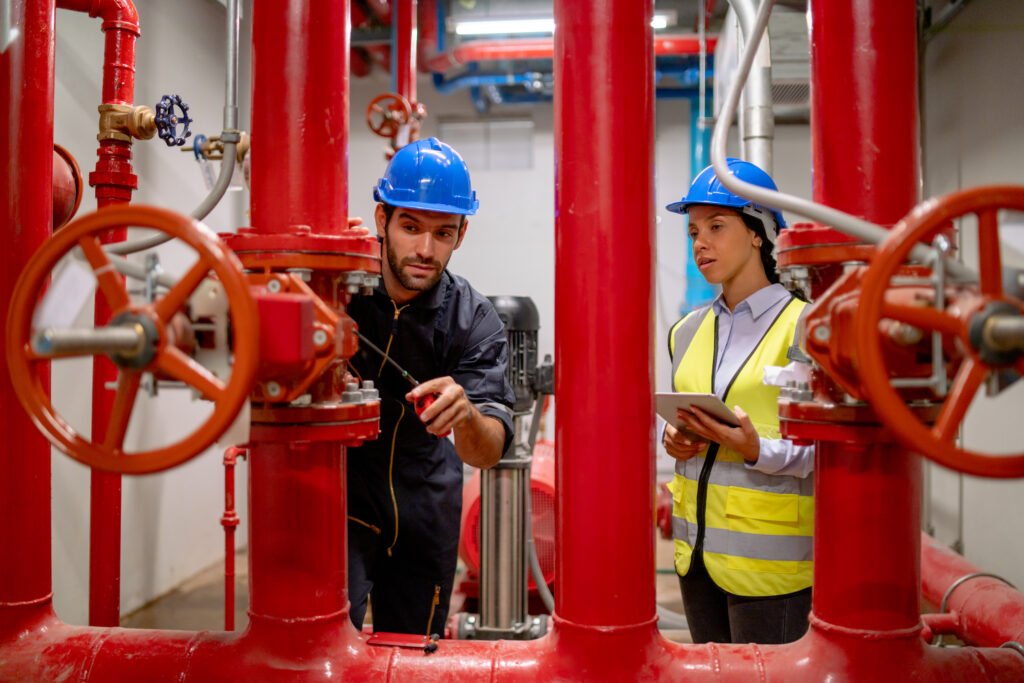Plumbing work
Any work related to water supply, drain or sewerage and gas supply is referred to as plumbing work. Plumbing work is one of the most technical job during grey structure construction of a house. It is a system which works as a conduit that runs throughout the house in each room/place where water or gas is required. Water and gas supplies have their own conduit system and sewer/drainage has its own separate system. Water and gas conduit is made of pipes in diameter range of 3/4″ to 2″ whereas sewer system is made using pipes in diameter range of 2″ to 6″.
In Pakistan, water and gas conduit are installed using galvanised iron (GI) pipes and PPRC pipes however in recent decade, PPRC conduit has almost replaced GI conduit because of its durability. Similarly for sewerage and drain pipes, precast concrete or steel pipes were used a trend which now has been completely replaced by the uPVC pipes.
Each conduit has its own components such as:
- Pipe lengths
- Bends
- Elbows
- T’s
- 45 degree bend
- Socket
- Overlap socket
- End cap etc
PPRC Conduit in plumbing work
In PPRC conduit, different pipes and components are joined together using a heater called PPRC welding machine. Two components should be carefully joined together since in PPRC conduits, only possible leakage point can be the joint of components. Two components are heated together on both sides (male and female ) of heating machine until the pprc partially melts, after which both components are joined together in straight manner without rotating either component in hand. Rotation of components during joining can weaken the bond and cause leakage in future. Each joint is verified using air pressure from mouth to check if there is any defect in the joint. Once conduit of whole house is complete and connected to main water tank, a very critical test is carried our to detect leakage using pressure gauge as show in picture below. All open ends and nozzles are completely closed and sealed using end caps and plugs to make complete conduit air tight. Once all plugs are tightened, pressure is applied from any one opening, incase of water conduit, water is inserted in pipes with pressure until the pressure gauge indicates figure of around 100 PSI, once the pressure is achieved, the gauge is closed and left for a day or two. Incase of gas conduit, air pressure of around 50 PSI is applied in similar manner. Any sudden or major drop in the figure on gauge will indicate that there is a leakage in conduit somewhere which must be traced. However a very gradual drop in pressure is not alarming, this is mostly due to the fact that plugs used to temporarily seal the nozzles are not 100% sealed.
uPVC Conduit in plumbing work
In uPVC conduit for sewer and drain, different pipes and components are joined together using a solvent solution. Any joint without solvent can be a permanent source of water leakage. Another important point that must be noted is that apart from the sewer/drain pipes that have to be concealed or underground, remaining pipes that are to be dropped along the exterior walls, should never be fixed concealed in walls, infect they should be open and visible so that incase of any leakage in future, walls and plaster remain safe from being damaged. Secondly leakage detection will be much more easy in case of open piping. There is not method like the one mentioned in PPRC for leakage testing of uPVC pipes, however a method that can be practiced is the water level mark. Concealed uPVC pipes are fixed first at initial stages of grey structure before preparing floor base, at this stage fill all the pipes with water and mark the level of water in each washroom before closing the open mouths using end caps. Incase of a leakage, level of water will continuously drop from the mark and leaked water will be easily visible in plasters or walls, hence it can be repaired before complete finishing of house.




